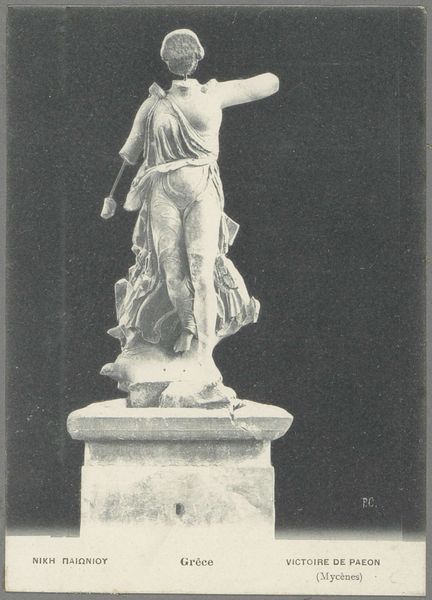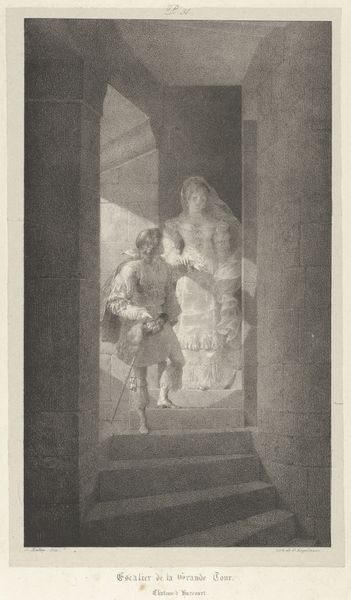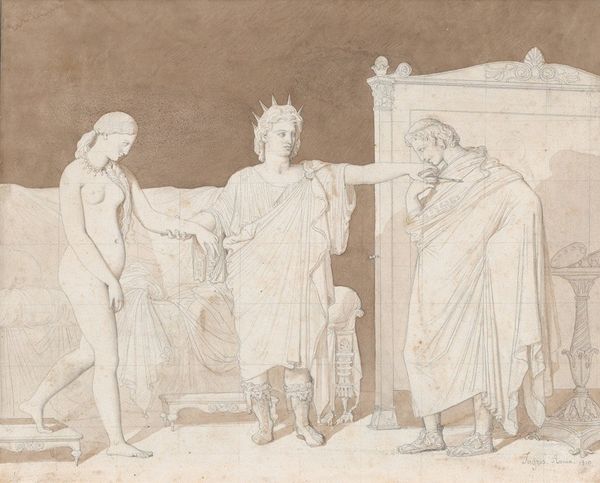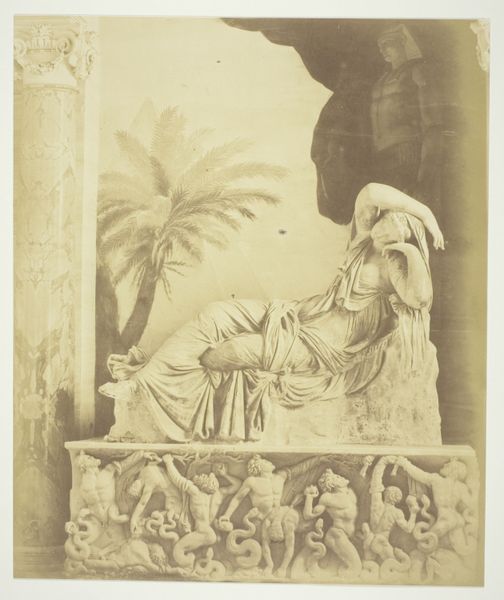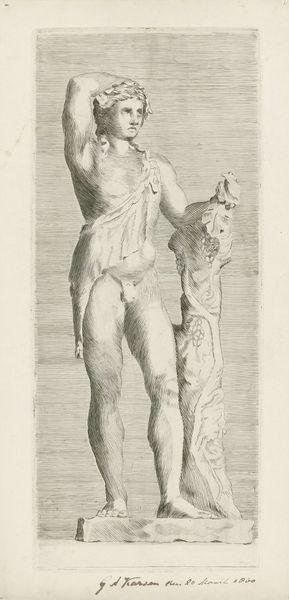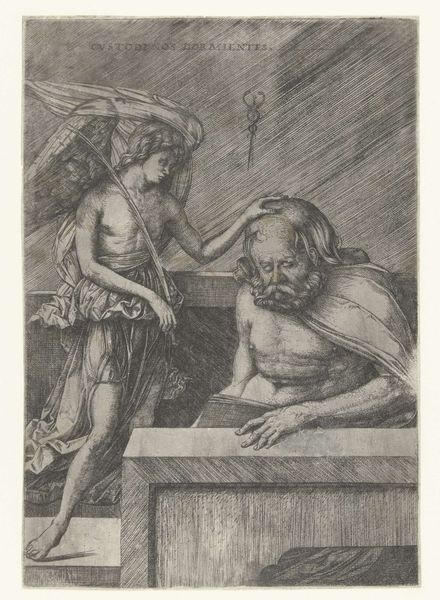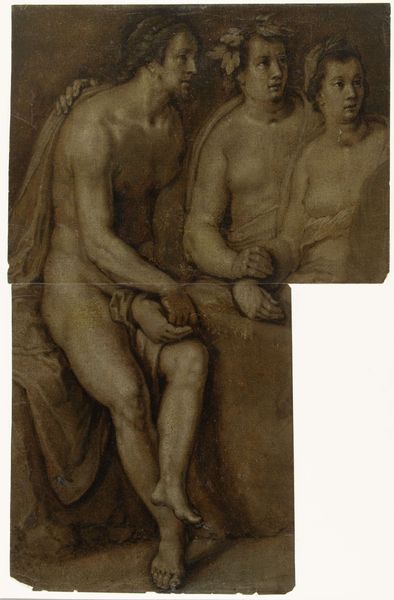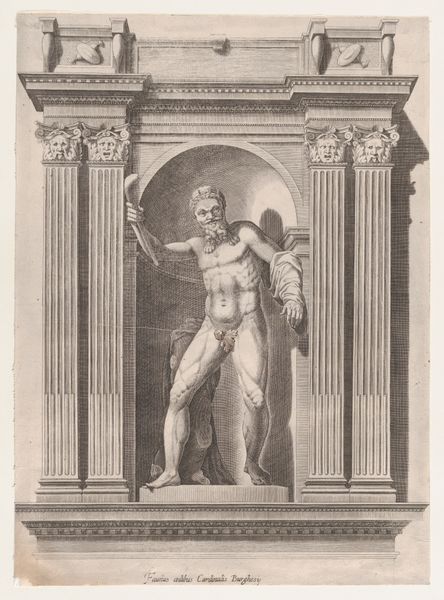
Reliëf voorstellend Pallas Athene, Atlas en Hercules die de gouden appels van de Hesperiden rooft before 1905
0:00
0:00
relief, sculpture
#
portrait
#
greek-and-roman-art
#
relief
#
figuration
#
ancient-mediterranean
#
sculpture
#
statue
Dimensions: height 127 mm, width 90 mm
Copyright: Rijks Museum: Open Domain
Curator: Isn't it wonderful to imagine ancient hands shaping this relief? We’re looking at a depiction of Pallas Athene, Atlas, and Hercules engaged in the legendary quest for the golden apples of the Hesperides. This dates back to before 1905. Editor: I get such a feeling of... resignation, almost weariness, looking at it. Atlas burdened, even in this static form. Athena standing by, watching. Is this less triumph, more about the heavy weight of responsibility? Curator: That’s a perceptive read. Formally, consider the composition. Athena’s rigid, vertical form provides a stark contrast to Atlas's struggling posture. The implied diagonal lines of strain…it all suggests immense effort and enduring burden. Hercules and the apples offer the only spatial balance to Athena, with the rest focused solely on Atlas’ labor. Editor: And isn't there a melancholy in those downturned faces? Is that something in the classical style of rendering the human form, that air of seriousness or, is it speaking to us of sacrifice? Atlas is literally holding up the world...I wonder what the sculptor, beyond a recounting, wants us to really feel? Curator: Interesting, to focus on the emotional register. Beyond the narrative, perhaps there’s something embedded here. It brings me back to discussions around how form shapes feeling: the deliberate use of low relief flattens perspective and compresses depth to me, amplifying a sense of a world pressing in. It highlights both isolation and, indeed, resignation. Atlas as a kind of prototype existential hero perhaps. Editor: What do you suppose someone, centuries from now, would read in us and our own burdened heroes? The material—probably marble if it is anything like classical reliefs I’ve viewed–suggests permanence, that desire to immortalize and remember our accomplishments and even, and more importantly, our sacrifices. Curator: Yes. This piece—this moment captured in stone, if only for a few minutes in the day of a viewer– it asks more of us than just a viewing, doesn't it? To reflect on what our labor amounts to, the stories we build and who ultimately is left shouldering that legacy. Editor: That’s a weighty idea to take with us! Heavy stuff, even for an afternoon viewing. Thank you.
Comments
No comments
Be the first to comment and join the conversation on the ultimate creative platform.


